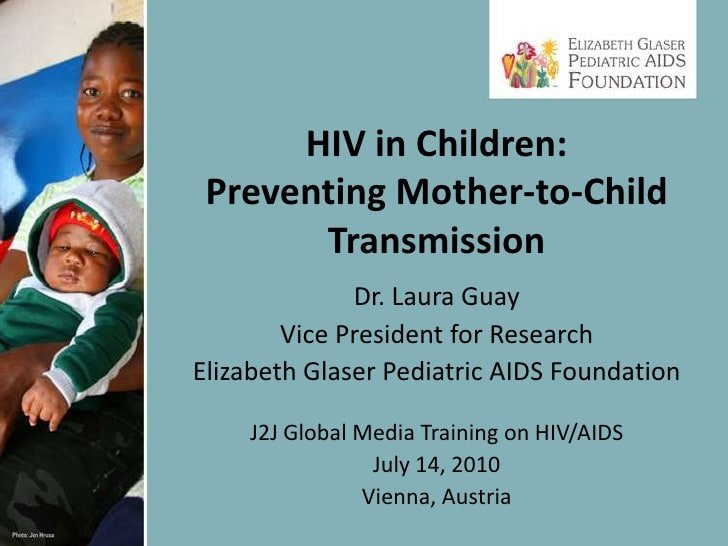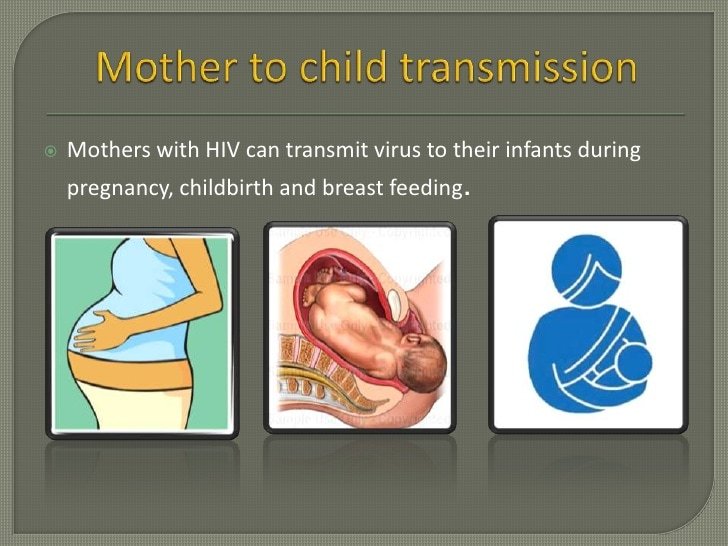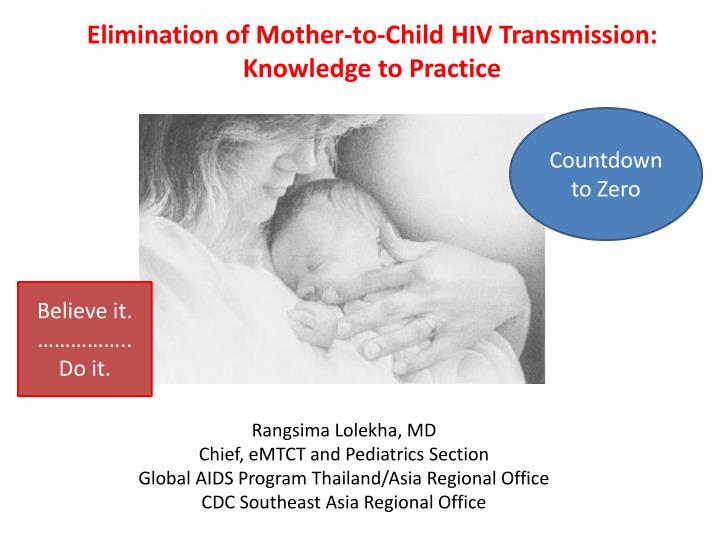Progress In Prevention Of Mother
A number of countries have now reached the elimination threshold for mother-to-child transmission of HIV and syphilis. These are Belarus, Cuba, Thailand and Malaysia, Anguilla, Antigua and Barbuda, Bermuda, Cayman Islands, Montserrat and Saint Kitts and Nevis. Armenia has eliminated vertical transmission of HIV and the Republic of Moldova has eliminated vertical transmission of syphilis.2223 Outside of these countries, progress on the key focus areas is mixed, as outlined below.
Cultural Beliefs And Gender Dynamics
In many settings, traditional gender roles and cultural beliefs mean that men often make decisions determining women’s participation in HIV testing and wider SRH services.98
In 2017, 29 countries require women to obtain the consent of a spouse or partner to access SRH services.99 This lack of access to comprehensive HIV and SRH services means that women are less able to look after their sexual and reproductive health and rights and reduce their risk of HIV infection.
Where SRHR and HIV services exist, they are primarily for married women and do not meet the specific needs of unmarried women of any age, particularly young women and adolescent girls. Gender dynamics also feed into discrimination from service providers, stemming from views around female sexuality.
In many communities in sub-Saharan Africa, pregnancy is viewed as a ‘woman’s affair’, with a man’s role primarily to provide financial support.
A Ugandan study found that, even if men saw accompanying their partner to antenatal clinics or PMTCT services as good practice, many still felt their main role was to provide financing for registration and delivery fees.100
A 2018 study among women and men in Kibera, Kenya found that health clinics were generally viewed as places for women and children, especially for antenatal and postnatal care.
Home Delivery And Mtct Of Hiv
Five studies, 2115 mother-baby pairs, were included in this category of meta-analysis . Three of the included studies showed a significant association between home delivery and a higher risk of HIV transmission from mother to the child. Two studies showed no such association . The pooled meta-analysis showed higher odds of MTCT of HIV among HIV positive women who gave birth at home than women who delivered at health facilities in the presence of skilled birth attendants, OR=5.08 . Significant heterogeneity was found. Whereas, the Beggs and Eggers tests showed no statistical evidence of publication bias, p-value=0.142 and p-value=0.055, respectively .
Also Check: How Long Does Hiv Live On Surfaces
Is It Safe To Take Hiv Medication In Pregnancy
Some medicines for HIV aren’t suitable to take during pregnancy.
If you have HIV and become pregnant, contact your local HIV clinic.
This is important because:
- some anti-HIV medicines can harm unborn babies, so your treatment plan will need to be reviewed
- additional medicines may be needed to prevent your baby getting HIV
But if you’re taking HIV medication and you become pregnant, do not stop taking your medication without first speaking to your GP.
Always check with your GP or midwife before taking any medicine when you’re pregnant.
Effective Treatments Can Reduce Hiv Transmission

When someone with HIV is on antiretroviral treatment and consistently has very low levels of virus they are not infectious and cannot sexually transmit the virus.
This may be true for sexual transmission during pregnancy, but researchers are still gathering more evidence before they can be confident it is true for transmission during pregnancy, labour and delivery, and during breastfeeding.
New preventative medications Pre-exposure prophylaxis and post-exposure prophylaxis can be taken by HIV-negative people who are at risk of getting HIV.
As long as the HIV-positive partner maintains a stable undetectable viral load and these medications are taken strictly as prescribed, HIV transmission to a negative partner is not possible.
Speak to your treating doctor if you would like to explore these newer prevention drugs.
You May Like: Does Nba Youngboy Have Hiv
Getting Pregnant When A Male Partner Is Hiv
If a male partner is HIV-positive, a procedure called sperm washing can be used to conceive. During this procedure a machine separates sperm cells from the seminal fluid, which can carry the virus. The washed sperm is then used to fertilise the womans egg using a special catheter inserted into the uterus.
If the male partner is on effective treatment and has a stable undetectable viral load, there is no risk of HIV transmission.
In-vitro-fertilisation may also be an option.
Will My Baby Need Treatment After Delivery
A 1994 study by the National Institutes of Health found that giving ZDV to an HIV-positive pregnant woman during her pregnancy and to her baby decreased the risk of passing the infection on to the baby by 66%. The baby should be treated with ZDV for the first six weeks of life. Eight percent of babies of women treated with ZDV became infected, compared with 25 percent of babies of untreated women.No significant side effects of the drug have been observed other than mild anemia in some infants that cleared up when the drug was stopped. Follow-up studies show that the HIV-negative treated babies continued to develop normally.
Don’t Miss: Does Cookie Johnson Have Hiv
What Are The Components Required To Implement This Program
- Diagnosis. The World Health Organization recommends the use of rapid HIV tests, which allow pregnant women to be tested and receive results in the same clinic visit.4 In areas with high prevalence of HIV among pregnant women, it may be more cost-effective to give ART to all birthing women, thus removing the need for diagnosis.5
- Drugs. Antiretroviral drugs can be costly. Shorter regimens may have significantly lower drug costs.
- Distribution/adherence to drug regimen. A method for ensuring that drugs are reliably taken by pregnant women and their infants at the appropriate times.
Getting Pregnant When You Are Hiv
If you want to conceive, are an HIV-positive woman with an HIV-negative male partner, you can choose artificial insemination. You can do this at home using your partners semen, rather than having unprotected sex.
To improve your chances of becoming pregnant through artificial insemination it is best to do it at the most fertile time in your menstrual cycle.
Learning about fertility awareness will help you to know when you are most likely to conceive.
Speak to your GP, HIV doctor, sexual health nurse, or fertility specialist.
Also Check: Does Cookie Johnson Have Hiv Aids
Actions For This Page
- HIV can pass from mother to baby during pregnancy or birth or via breastmilk.
- Due to treatment advances, mother to child transmission of HIV is very rare in Australia.
- With medical support, the HIV transmission rate from mother with HIV taking antiretroviral treatment to their unborn child is 1% or less in Australia.
Providing Support For Hiv Exposed Infants
There is emerging evidence about the negative impact on the health and development of infants who are exposed to HIV, even if they do not become HIV positive.
Some studies have found higher levels of illness, death and stunted growing among HIV exposed infants compared to those who have been born to HIV negative mothers.52 The reasons behind this are not yet fully understood, and may be attributable to co-existing factors such as malnutrition, however research is growing.
Read Also: Does Cookie Johnson Have Aids
Is Hiv Testing Recommended For Pregnant Women
The Centers for Disease Control and Prevention recommends that all women get tested for HIV before they become pregnant or as early as possible during each pregnancy. The earlier HIV is detected, the sooner HIV medicines can be started.
All women who are pregnant or trying to get pregnant should encourage their partners also to get tested for HIV and, if possible, screened for other sexually transmitted diseases . STDs can increase viral loads in people with HIV. If any partner has HIV, that partner should take HIV medicine as prescribed to stay healthy and prevent transmission.
What Is Hiv And How Is It Transmitted

HIV is a virus that can weaken the immune system to the point that it is unable to control some infections.
HIV infection is not the same thing as AIDS. AIDS is the most advanced stage of HIV infection, when the immune system is at its weakest and a person has several specific illnesses.
AIDS is now very rare in Australia, as HIV treatments are highly effective at protecting the immune system from the virus.
Most people living with HIV in Australia can expect to live long, healthy lives without ever developing AIDS, if they are on effective treatment.
In Australia, HIV is commonly transmitted through:
- Anal or vaginal sex without the use of condoms.
- Having unprotected sex without using other prevention methods like PrEP or undetectable viral load or U=U .
- Sharing needles, syringes and other injecting equipment.
People who are HIV-positive and on treatment and have achieved and maintained an undetectable viral load cannot transmit HIV sexually.
For people who do not have HIV, regular use of condoms is the easiest way to prevent HIV.
For those at higher risk of HIV, PrEP is a medication that, when taken as prescribed, is up to 99% effective at preventing the virus.
Don’t Miss: Does Nba Youngboy Have Hiv
Mixed Feeding And Mtct Of Hiv
Six studies, 2541 mother-baby pairs, were included in this category of meta-analysis . Except for one study , all other included studies showed the presence of association of mixed feeding with a higher risk of MTCT of HIV. The meta-analysis showed a strong association between mixed feeding and MTCT of HIV, OR=7.46 . The heterogeneity test showed no statistical evidence of heterogeneity I2 =27.2%, p-value=0.231. The Beggs and Eggers test for publication bias also showed no statistical evidence of publication bias, p-value=0.573 and p-value=0.892 respectively .
Fig. 3
Forest plot displaying the association of selected factors with mother to child transmission of HIV in Ethiopia
Characteristics Of Included Studies
Eight of the studies included in the final analysis were retrospective cohort studies and one study was prospective cohort study . The studies used health facility-based PMTCT data which was collected from 2004 to 2015. All studies included mother-baby pairs who were involved in the PMTCT care in the respective health institutions. Three articles were conducted in Amhara region , two in Oromia region , two in Addis Ababa, capital city of Ethiopia , one study in Southern Nations, Nationality and Peoples Region and one study was conducted in Dire Dawa City administration . The time of infant HIV diagnosis for all of the included studies was at or after six weeks postpartum. The sample size of included studies ranges from a minimum of 71 mother-baby pairs who had a documented HIV test result in Addis Ababa City to 896 in 10 sub-cities in Addis Ababa city . Overall, a total of 3688 mother-baby pairs were included in this review . The quality score of included studies ranges from 6 to 9, with a mean quality score±SD of 8±0.71.
Table 1 Summary characteristics of studies included in the meta-analysis of the prevalence of mother to child transmission of HIV in Ethiopia
Don’t Miss: Cookie Johnson Hiv
Hiv/aids In Pregnant Women And Infants
Human immunodeficiency virus is the virus that causes AIDS. When a person becomes infected with HIV, the virus attacks and weakens the immune system. As the immune system weakens, the person is at risk of getting life-threatening infections and cancers. When that happens, the illness is called AIDS.
HIV can be transmitted to the fetus or the newborn during pregnancy, during labor or delivery, or by breastfeeding.
This article is about HIV/AIDS in pregnant women and infants.
How Is Hiv Transmitted From Mother To Child
Without intervention, between 25% and 35% of the children born to HIV-positive mothers will themselves be infected.
In about 50% of the cases, transmission from mother to child occurs during labor and delivery. Scientists dont yet understand how exactly that transmission happens, but they have found that some treatments can prevent most cases. However, to many HIV-positive pregnant women in developing countries, these treatments are not available or acceptable. The hope is that better understanding of mother-to-child transmission will lead to more effective, more affordable, and more acceptable treatments. A study by Jesse Kwiek and colleagues published in the international open-access medical journal PLoS Medicine implicates placental microtransfusions in HIV transmission.
Placental microtransfusions cause exchanges of small amounts of blood between the mother and the baby. They occur in most pregnancies once labor starts, because the contractions cause small areas of rupture in the placenta. However, the overall amount of blood exchanged differs from delivery to delivery.
Until recently, it was not possible to measure the extent of these microtransfusions for a particular delivery, but now scientists have developed an assay based on umbilical cord blood that can do this. In this study, the researchers made use of this new assay to ask whether there is a link between the extent of placental microtransfusions and the likelihood of HIV transmission.
Read Also: Can Hiv Cause Hair Loss
What Is Perinatal Transmission Of Hiv
Perinatal transmission of HIV is when HIV is passed from a woman with HIV to her child during pregnancy, childbirth , or breastfeeding . Perinatal transmission of HIV is also called mother-to-child transmission of HIV.
The use of HIV medicines and other strategies have helped to lower the rate of perinatal transmission of HIV to 1% or less in the United States and Europe.
What Is The Treatment For Hiv
Individuals who are HIV positive will likely need to see a specialist. As with many other conditions, early detection offers more options for treatment. Today, there are medical treatments that can slow down the rate at which HIV weakens the immune system. However, there are other treatments that can prevent or cure the conditions associated with HIV. Anti-retroviral drug therapy may be given to a pregnant woman, which has proven to greatly reduce the chance of an infant developing HIV. A cesarean section may be recommended to reduce infant transmission from the birth canal. In the U.S., where other feeding options are available, an infected mother should be discouraged from breastfeeding her infant. Consult your child’s doctor for more information regarding various drug therapies.
Don’t Miss: Can Hiv Lay Dormant
How Can Vertical Transmission Be Prevented
There is a set of effective strategies that prevent mother-to-child transmission from taking place. These are called PMTCT: prevention of mother-to-child transmission.
Many women living with HIV have given birth to HIV negative children by taking these precautions:
By doing these things, the chances of the baby having HIV become very low under 1%. If you’re on HIV treatment and have an undetectable viral load, the chances are lower still: 0.1%.
How Will Hiv Affect My Labor And Birth

If no preventative steps are taken, the risk of HIV transmission during childbirth is estimated to be 10-20%. The chance of transmission is even greater if the baby is exposed to HIV-infected blood or fluids. Health care providers should avoid performing amniotomies , episiotomies and other procedures that expose the baby to the mothers blood. The risk of transmission increases by 2% for every hour after membranes have been ruptured.Cesarean sections performed before labor and/or the rupture of membranes may significantly reduce the risk of perinatal transmission of HIV.Women who have not received any drug treatment before labor should be treated during labor with one of several possible drug regimens. These may include a combination of ZDV and another drug called 3TC or Nevirapine. Studies suggest that these treatments, even for short durations, may help reduce the risk to the baby.
Recommended Reading: Does Nba Youngboy Have Hiv
What Is The Cost
We have not done thorough cost-effectiveness analysis of this program. Because such analysis is highly time-consuming – and because the results can vary significantly depending on details of the context – we generally do not provide cost-effectiveness analysis for an intervention unless we find what we consider to be a strong associated giving opportunity.
We provide some preliminary figures based on the Disease Control Priorities in Developing Countries report, which we previously used for cost-effectiveness estimates until we vetted its work in 2011, finding major errors that raised general concerns.
The Disease Control Priorities report estimates that the when using “a single dose of nevirapine,” this program costs & dollar 6-& dollar 12 per disability-adjusted life year averted.13 Using a simple calculation,14 we estimate that & dollar 6-& dollar 12 per DALY averted is equivalent to & dollar 150-& dollar 300 per HIV infection averted.
The DCP also cites a number of studies that estimate a considerably higher cost for the use of ART to prevent PMTCT, ranging up to & dollar 11,444 per HIV infection averted.15 We would guess that the variation is due to differences in which specific drug regimen is implemented.
Hiv Testing And Diagnosis
For women who are pregnant, HIV counseling and testing is the first and most critical step in reducing mother-to-child transmission. We work with local health facility staff and ministry of health officials to offer each individual visiting our supported facilities counseling and testing services. We ensure timely access to HIV diagnosis through innovative rapid HIV test technology.
Don’t Miss: Does Cookie Johnson Have Hiv
Reducing The Risk Of Passing Hiv To Your Baby
If you have HIV, you can reduce the risk of passing it to your baby by:
- taking antiretroviral drugs during pregnancy, even if you don’t need HIV treatment for your own health
- considering the choice between a caesarean or vaginal delivery with your doctor
- bottle feeding your baby, rather than breastfeeding
- your doctor prescribing your baby antiretroviral drugs for up to 4 weeks after they have been born
Do not breastfeed your baby if you have HIV, as the virus can be transmitted through breast milk.